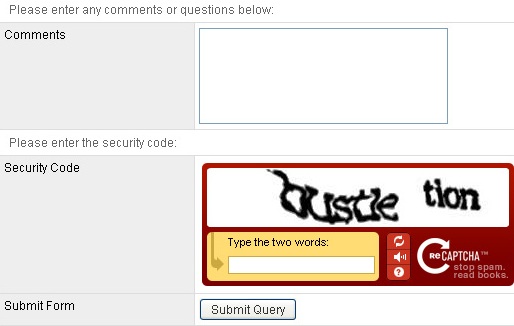Have you ever been to a website, filled out a form and wondered why you were forced to type in a series of squiggly letters or do simple maths equations in order to submit? Well, simply put, this is due to these businesses and individuals fighting their own wars on spam, and if you constantly receive email and database spam from your own website, then you might be in need of fighting one of your own. Lucky for you, this post details how you can eliminate most, if not all, spam coming to your inbox from your website contact, data collection and comment forms.
There is no doubt nothing worse than finding your precious time being pecked away at by the mindless sifting of these junk messages. Not only is it time-consuming, but it might also be eating up loads of space in your hosting account or database. Well now, if you want to get your time back, there is a great, free program that can help make sure there is a face behind the messages you receive from your website every day.
The program is called reCAPTCHA and is ultimately used to digitise books, newspapers, magazines and other types of media that were created before the digital age. Basically, reCAPTCHA copies / scans these old papers to a computer to be read by OCR (Optical Character Recognition) software, which finally translates the photos into actual, digital text.
I know this is starting to sound like something that would have nothing to do with fighting spam, but let me tell you it does, and it provides a great service in the process. See, sometimes the scanned digital copies or original books and newspapers are of poor quality, meaning the OCR software cannot decipher the words on its own. Instead of having countless hours spent each day by countless workers trying to read and translate the text, reCAPTCHA has decided to integrate this translation process into a form of CAPTCHA to help fight the war on spam.
CAPTCHA (short for Completely Automated Public Turing test to tell Computers and Humans Apart – aren’t you thankful for the acronym?) puts email senders, comment leavers and forum posters to the test to make sure they are not spam bots. For example, someone (or something in the case of the spam bot) will encounter a reCAPTCHA box when they try to use the contact form on your website. He /she will have to type the two words in the reCAPTCHA box into a text field, and if they are correct, the message can be submitted.
Digital Pacific is currently using the reCAPTCHA box on its website as in the following image:
The Technical Side: How it works.
When I first started reading about the program, I was sceptical. My immediate question was simply wondering how the program would know the words are correct if it doesn’t know what they were originally. The solution to this was for reCAPTCHA to pair an indecipherable word with a decipherable one. Before placing it in the test box, however, the program distorts both words just a bit more to make sure that even the decipherable word can only be recognised by human eyes. If the decipherable word is correct, then they assume the indecipherable one (by OCR standards) was also correct. In addition, they run the results against the responses of many other people before deciding on the validity of a translation.
reCAPTCHA provides various methods to integrate their software into your website, such as code snippets and plugins for WordPress and Drupal to name a few. If you would like to learn more, or see a working box in action, take a look at this page on the reCAPTCHA website. It not only helps you lessen spam caused by your website’s forms and get some of your time back, but it is also a service concurrently helping to digitise old issues of the New York Times.
Sounds like a great program to me… What do you think?!







